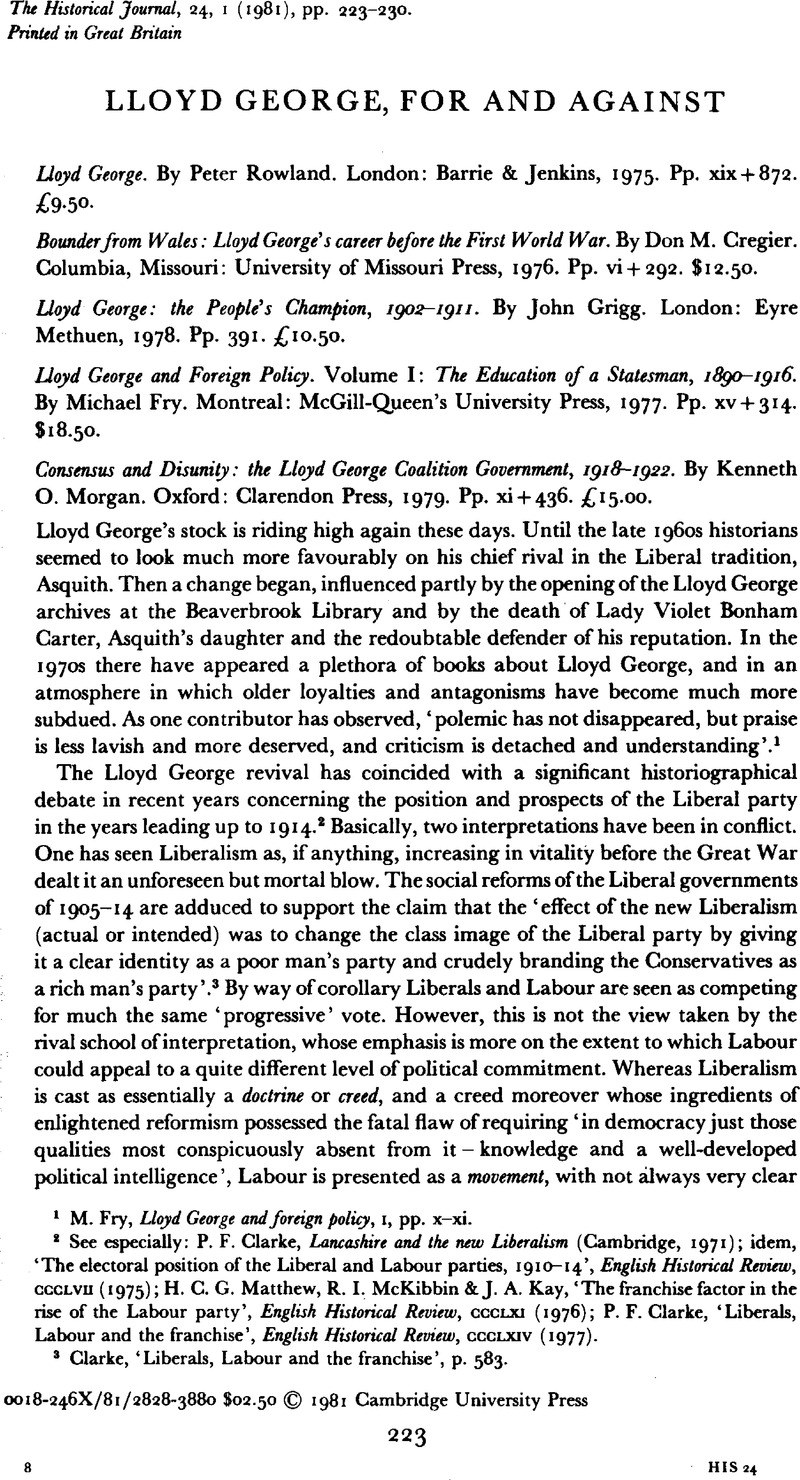Published online by Cambridge University Press: 11 February 2009

1 M. Fry, Lloyd George and foreign policy, 1, pp. x-xi.
2 See especially: Clarke, P. F., Lancashire and the new Liberalism (Cambridge, 1971);CrossRefGoogle Scholar idem, ‘The electoral position of the Liberal and Labour parties, 1910–14’, English Historical Review, CCCLVII (1975); Matthew, H. C. G., McKibbin, R. I. & Kay, J. A., ‘The franchise factor in the rise of the Labour party’, English Historical Review, CCCLXI (1976);Google ScholarClarke, P. F., ‘Liberals, Labour and the franchise’, English Historical Review, CCCLXIV (1977).Google Scholar
3 Clarke, ‘Liberals, Labour and the franchise’, p. 583.
4 Matthew et al., ‘The franchise factor’, p. 747.
5 P. Rowland, Lloyd George, pp. 271–2.
6 D. M. Cregier, Bounder from Wales, pp. 137–8.
7 Ibid. p. 104.
8 Ibid. p. 127.
9 Ibid. p. 142.
10 Ibid. p. 125.
11 Ibid. p. 206.
12 Gilbert, B. B., ‘David Lloyd George: the reform of British landholding and the budget of 1914’, Historical Journal, XXI, 1 (1978), 133.Google Scholar
13 J. Grigg, Lloyd George, p. 294.
14 Ibid. p. 160.
15 Ibid. p. 268.
16 Ibid. pp. 28–9.
17 Ibid. p. 56.
18 Ibid. pp. 86–7.
19 Ibid. p. 189.
20 Ibid. p. 128.
21 Ibid. p. 289.
22 Fry, Lloyd George, p. 63.
23 Ibid. p. 17.
24 Ibid.
25 Ibid. p. 16.
26 Ibid. p. 17.
27 Ibid. p. 14.
28 Ibid. p. 15.
29 Ibid. p. 132.
30 Ibid. p. 9.
31 K. Morgan, Consensus and disunity, p. 2.
32 Campbell, J., Lloyd George: the goat in the wilderness, 1922—1931 (London, 1977), p. 243.Google Scholar
33 Morgan, Consensus and disunity, pp. 78–9.
34 Ibid. p. 165.
35 Ibid. p. 367.
36 Ibid. p. 149.
37 Ibid. pp. 252–3.
38 Taylor, A. J. P., Politics in wartime and other essays (London, 1964), pp. 147–8.Google Scholar
39 Morgan, Consensus and disunity, p. 78.
40 Rowland, Lloyd George, p. 499.